Last updated on Oct 14, 2025
150+ Useful Character Quirks (Plus a Few Clichés to Avoid)
Isabella Peralta
A writer and editor, Isabella coordinates "Prompts," Reedsy's weekly short story competition. Originally from the Philippines, she is a graduate of the University of Cambridge.
View profile →Character quirks in a story, like in real life, are unique traits and behaviors that make a person memorable. These habits can be as minor or dramatic as the authors wants them to be, but their overall effect is typically to add depth to a character's personality.
But it's easier said than done. Writing great characters is a constant balancing act — you want each one to have certain quirks and weaknesses, but you don’t want them to be so zany that they’re off-putting to readers. So how can you come up with realistic traits that humanize your characters, without falling into cliché?
Luckily, this post offers a list of over 150 unique character quirks and traits that avoid cliché and can help make the people in your story much more relatable! But before we get into that, here are a few notes on what character quirks are in stories and how to use them.
Check out this list of over 150 character quirks (that you can steal for your book).
Click to tweet!
What are character quirks?
A character quirk is an unusual feature that sets your character apart from others. Many of the most famous figures in literature have distinctive quirks, from Harry Potter’s lightning scar to Hercule Poirot’s mind-blowing detective abilities.
To clarify, “quirk” doesn’t just mean any descriptive quality — for example, having brown hair does nothing to make your character special. Having blue hair, however, is a different story. Basically, for something to be a quirk, it has to stand out from the pack; it has to be, well, quirky.
This might be a physical feature or something about your character’s personality. It might be a special talent (like heightened intelligence) or a paralyzing fear (like arachnophobia). But whatever it is, it should be unusual enough that readers remember it and associate it with whichever character possesses that trait.
Q: What are the most overused character clichés writers should avoid?
Suggested answer
Green eyes. And eyes that glow, that swirl, that change color, have flecks that dance, and can be seen from absurd distances. Fantasy books are full of this stuff. It gets tiresome. And while we're at it, does every feisty female have to have red hair?
Doreen is available to hire on Reedsy ⏺
How to use character quirks
You might think that deploying a character quirk is pretty simple — just think of one, add it to a description, and you’re done! But it’s actually a bit more nuanced than that. Here are a few ways to ensure that these quirks work effectively in your story.
Make them important to the plot

Some of the best quirks are those that end up aiding the character or contributing to the plot in some major way. For instance, one of Katniss’ traits in The Hunger Games is that she’s an exceptional hunter, and her skill with a bow and arrow ultimately helps her survive the games. Or think about the example above of Harry’s scar — not only is it a unique physical feature, but it also lets him know when Voldemort is nearby.
Q: How can writers use stereotypes and tropes to their benefit when creating a character?
Suggested answer
Well, stereotypes and tropes exist because they are the comfort food of readers, and should be the comfort food of writers too. Not to the extent that you write cliche stories by overusing the same old thing. But by the fact that their presence in certain story types is expected and even desired by fans of that story type, so to try and write without them can leave readers unsatisfied and the story feeling incomplete.
There are great books out there on this, John Truby in particular has a great one out. Knowing the stereotypes of a heroes journey, for example, gives you lots of options for side characters and supporting characters to help a hero on certain types of quests. The tropes are the expected encounters and obstacles that hero will encounter along the way.
If you start by mapping these out and identifying which are required (tropes most of all) and which work best for your story but are optional (stereotype characters) then you can take them and twist them in unique and interesting ways, even flip them around in timeline or approach in ways that make it clear they are there (and meet reader expectations and preferences) while still avoiding cliche expectation and creating interesting and unique characters, world, and stories that captivate readers.
Bryan thomas is available to hire on Reedsy ⏺
Trope = yes
Stereotype = no
A stereotype is an oversimplified view of a type of person, based on one aspect of their identity, like race or gender or hair color or where they're from. It's important to know stereotypes so you can avoid them in your writing, both so you won't be generic and so
Tropes, on the other hand, are like adding sugar to cake, rather than salt: You want to know what your audience came for, so you can give it to them!
Tropes are things with universal appeal that audiences come back for time and time again. (Not to be confused with a cliche, which is just something that has been overused until it's cringey. For instance, the villain in a YA novel being a mean blonde cheerleader is both a cliche and a stereotype. But a trope might be that the main character is an underdog who manages to win the heart of the most high-status boy in school!) Examples: enemies to lovers, amateur detective, chosen one, only one bed...
Intelligent use of proven tropes, combined in a new and unique way, are the fastest way to genre writing success!
Michelle is available to hire on Reedsy ⏺
A trope is something that is instantly familiar to readers: a character type, setting, plot point, or style of writing that is recognizable and tied to a specific genre.
For example, one familiar romance story structure is the “enemies to lovers” plot. This pattern is immediately recognizable to readers, and although it is used often, writers are still finding new and unique ways to spin it, and readers still love engaging with it.
Another popular trope is that of “The Chosen One.” Think about it: Both Luke Skywalker and King Arthur find a magical sword, receive the guidance of an older, wiser mentor, and go on a journey to storm a stronghold to save a princess. Even though the building blocks are the same, the stories are vastly and entirely different…and centuries apart!
There are hundreds of ways to apply this trope and come out with a unique and fresh story.
Tropes are the conventions, ideas, or motifs that make up these basic building blocks of all storytelling. In order to tell a fantastic story, tropes are necessary (and not to be confused with clichés, which are devices, expressions, or phrases that have been used so often and in so many places that readers have become tired of them, and desensitized to them). But why are they necessary?
Well, tropes are baked into every genre that we know and love. If you’re writing a western novel, odds are you might have a lone cowboy or a bumbling sheriff in there. If you’re writing a thriller or mystery novel, you might find yourself creating a gritty, lone-wolf detective, who acts first and asks questions later. Just because these tropes have been used before, doesn’t mean they’re tired!
If you’re writing in a specific genre, in order to use tropes effectively, you should be intimately familiar with the tropes of that genre. Knowing them inside and out means you’ll have your best shot at subverting them and spinning them in new ways that readers will enjoy (and avoid veering into cliché territory).
Think of books in the genre that you’ve read before. Was there one that you didn’t like? Ask yourself: What specifically made you dislike it? It might be that a trope wasn't used effectively, and if you can identify exactly what disappointed you about the way that trope was used, it can help you discover what you wished that writer might have done differently. And then: poof! Suddenly you have a thread of inspiration you can pull on to get some ideas for your own story.
Remember: tropes are patterns. And patterns can be twisted, bent, and manipulated. Just be careful not to break the pattern, or you risk readers finding it difficult to relate to a trope they cannot recognize and therefore relate to.
Writers just like you are still finding fresh ways to put a spin on tropes of all kinds, and using those building blocks to build entirely new and unexpected things for us to read!
Lesley-anne is available to hire on Reedsy ⏺
When it comes to building characters, tropes and stereotypes get trashed. Authors shy away from them, not wanting their stories to sound stale because they're leaning on well-worn tropes. But applied sparingly, these storytelling crutches can enrich your characters, allow readers to jump in easily, and even lay the foundation for surprise and depth.
Tropes are a short-cut for your readers. They give readers a feeling of who a character is and where they stand in the story. A "mentor," for instance, gives a feeling of guidance, a "reluctant hero" gives a feeling of inner conflict, and a "grizzled detective" gives a sense of experience and exhaustion. These archetypes shave space out of your storytelling so readers can catch on to relationships and dynamics immediately. The art is to combine them with unique characteristics that make your character stand out.
Stereotypes are worse. They can establish context rapidly, but they can also be lazy or toxic if they are not challenged. The trick is to use them as a springboard, and not an endpoint. A character who holds the "shy bookworm" description might secretly be a social master manipulator. That interplay between expectation and reality keeps things interesting and provides depth.
Another great way to use tropes is to subvert expectations. Use a "princess in distress" who saves herself or a "charming rogue" who has imposter syndrome. By turning the expected tropes on their head, you catch the reader off guard without losing respect for those conventions.
Ultimately, the most compelling characters are born from layers beyond the trope. Surface traits like charm, wit, or wisdom draw people in, but motivation, flaw, and contradiction create a character. Tropes will also support your themes—whatever they may be, from redemption to generational insight to ambition's cost—adding cohesiveness to your narrative but still permitting complexity.
The issue happens when writers rely on tropes or stereotypes without questioning them. Does every single one serve the story, add depth, and make your character more human? Used consciously, tropes and stereotypes are not clichés—they are tools used to make your characters immediately recognizable, resonant at a thematic level, and unforgettable.
John is available to hire on Reedsy ⏺
While it's worth noting the use of tropes and stereotypes can be comforting -- I love an enemies-to-lovers, "Who did this to you?" trope in romance, and the Chosen One in young adult makes me nostalgic for the golden age of dystopian; however, you can also use stereotypes and tropes by subverting them.
A great example is Victoria Aveyard's RED QUEEN. I won't reveal the twist, but it took a certain romantic stereotype, crushed it to pieces, and surprised readers in a way that still gives me (delightful) trauma! Another more general example is the Game of Thrones series and the way that George RR Martin kills characters off left and right. Those you thought were heroes or "chosen" are not guaranteed to be around long enough to fulfill any destiny.
So by all means, embrace tropes and stereotypes to give readers what they want; however, think about surprising them a little bit. See how you can tell a different story.
Grace is available to hire on Reedsy ⏺
There is a common misconception within writing circles that "trope" = bad or cliche. While yes, certain tropes and character traits can become overused and cliche, tropes are more like reader expectations when they pick up a book from a certain genre. For instance:
- In romance, tropes are things like friends to lovers, enemies-to-lovers, he falls first, grumpy neighbor
- In YA fantasy, tropes can be things like the Chosen One, Love Triangles, or Hidden Magic
- In middle grade, tropes can be the power of friendship, magical animals, magical academies
While not all books in these genres include all of these things, and while these things can certainly be cliche if you don't put your unique take on it, they are what readers enjoy about a genre. After all, isn't that why you read a certain genre, because there are tropes and elements within that you enjoy?
The way to use these stereotypes and tropes to your benefit is to use them as a framework, understanding how they operate and why readers enjoy them. Then, sprinkle your unique author magic on them. How you describe characters, the dynamic between two characters, how certain elements show up or are utilized, all these can be unique to you and your book. You're not looking to reinvent the wheel, but rather give it a new coat of paint, your coat of paint, so that you write the story you want while delivering a satisfying reader experience.
Sean is available to hire on Reedsy ⏺
If the story is told in the first person perspective, your character's quirks will be at the forefront. Use them wisely, to avoid tiring the reader.
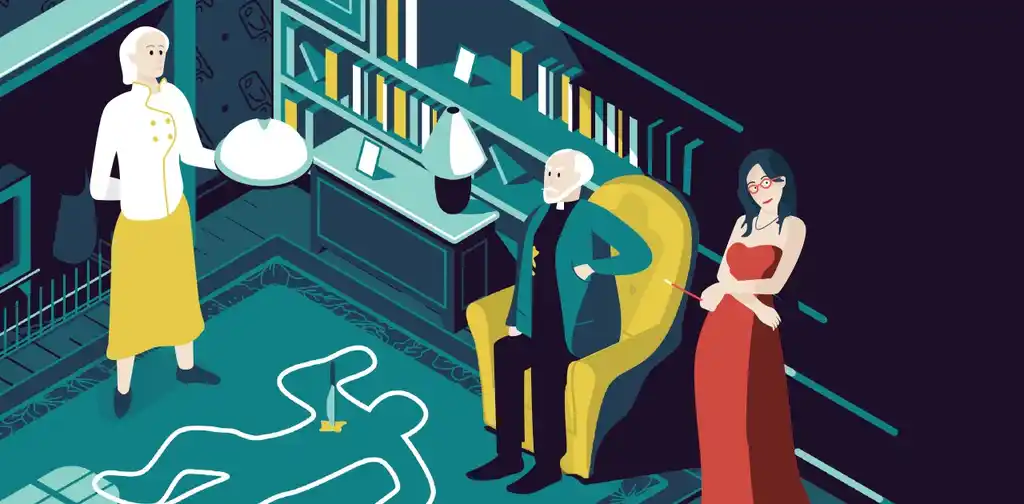
FREE COURSE
Understanding Point of View
Learn to master different POVs and choose the best for your story.
Don’t overuse them
Avoid making any of your characters too quirky. You don’t want any of them, especially female characters, to cross the line from unique to unbelievably idiosyncratic.
Also avoid describing these quirks in too much detail, as this can lead to overly ornate descriptions that make readers cringe. If you find yourself writing a paragraph in your YA romance about “her freckled face that looked like constellations of hazel, shimmering dots practically leaping off her countenance,” stop and reevaluate. Even when introducing a quirk, a brief mention is enough: “A puzzled expression spread across her freckled face.”
Be consistent, with occasional exceptions
Some of these traits should define how your characters act most of the time, but rules are made to be broken — which is why it’s okay to let people go against their quirks every once in a while. For example, a notoriously unfunny person might crack a decent joke, or somebody super-stoic sheds a tear. After all, if a character doesn’t defy their typical traits every once in a while, they’re at risk of becoming one dimensional.
Try to stay original
As you’re figuring out which quirks to give your characters, do your best to be as innovative and original as possible. While almost every quirk in the book has been used at one time or another, your characters’ traits should function in different ways and create a totally unique dynamic in your story.
Q: What does it mean to create an “original” character in fiction?
Suggested answer
Original characters are those who are subverted stereotypes, who have things about them which are conflicting, who go against the grain in some way and who speak, think and react in ways that are not predictable.
Vanessa is available to hire on Reedsy ⏺
An original character feels and seems real and believable. They do not closely resemble a character that is well known in literature and have their own unique personality, desires, and set of circumstances.
Melody is available to hire on Reedsy ⏺
I think writing an original character just means that when a reader engages with that character, no other particular character comes to mind. Bit of a pithy answer, I know, but there you go. 😉
Brett is available to hire on Reedsy ⏺
That being said, here are some ideas to get the ball rolling on various quirks you might use. They’re divided by physical features, personality traits, and strengths and weaknesses, for your perusing convenience. There’s also a list of clichéd quirks at the very end, so you know exactly which ones to avoid. Enjoy!
🖊️
Which contemporary author are you?
Find out which of today's greats is your writerly match. Takes one minute!
150+ useful character quirks
Physical
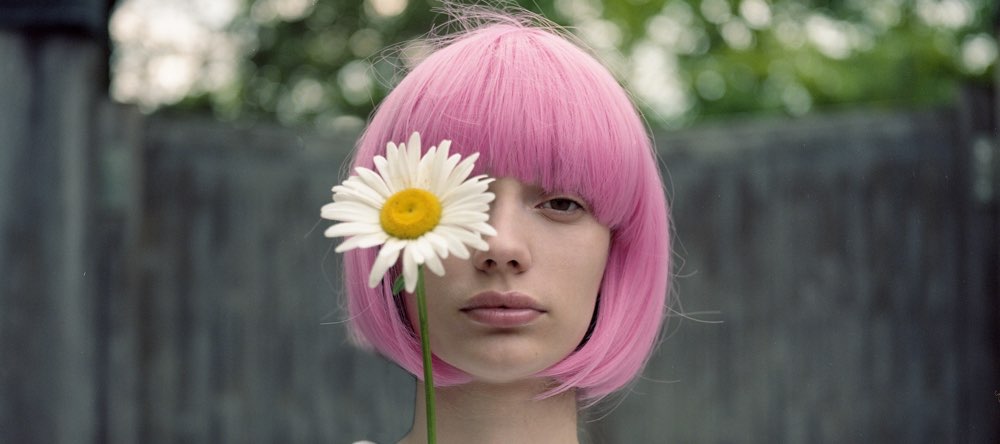
These traits have to do with someone’s looks or physical habits.
- Unique eye or hair color
- Extremely short or tall
- Some discerning physical mark — birthmark, freckles, mole, or scar
- Wears unusual glasses
- Has braces and headgear
- Large feet — may mean they’re clumsy
- Bites their nails/lips or chews on their hair
- Constantly fidgeting and can’t sit still
- Acne, eczema, or other skin problems
- Many tattoos or piercings
- Often sick or has allergies (constantly sniffling/blowing their nose)
- Talks very loudly or quietly
- Says everything like it’s a question
- Terrible breath — may be a coffee drinker
- Gets sweaty easily (especially when nervous)
- Unusually hairy arms or legs
- Very long painted nails
- Always wears a faceful of makeup
- Has a stutter or other speech impediment
- Often tucks their hair behind their ears
- Constantly chews gum
- Always picking their teeth
- Smokes and has a raspy voice
- Breathes heavily or snores
- Is extremely muscular
- Walks very slowly or quickly
- Left-handed or ambidextrous
- Constantly scratching themselves
- Has some noticeable physical tic, like a twitch
- Always wears a distinct item of clothing or accessory — a favorite pair of socks, a lucky jersey, or even a particular shade of lipstick
If you choose to assign a specific physical quirk to character, remember to be consistent! It can be distracting to readers if someone keeps alternating between eye colors, or if they’re supposed to be extremely short, but have no trouble reaching a high shelf.
Of course, these can be some of the hardest details to remember, since physical appearance isn’t an inherent part of your character’s personality and won’t necessarily affect how they act. Try using a character profile template to keep track of these quirks so you don’t accidentally contradict yourself!
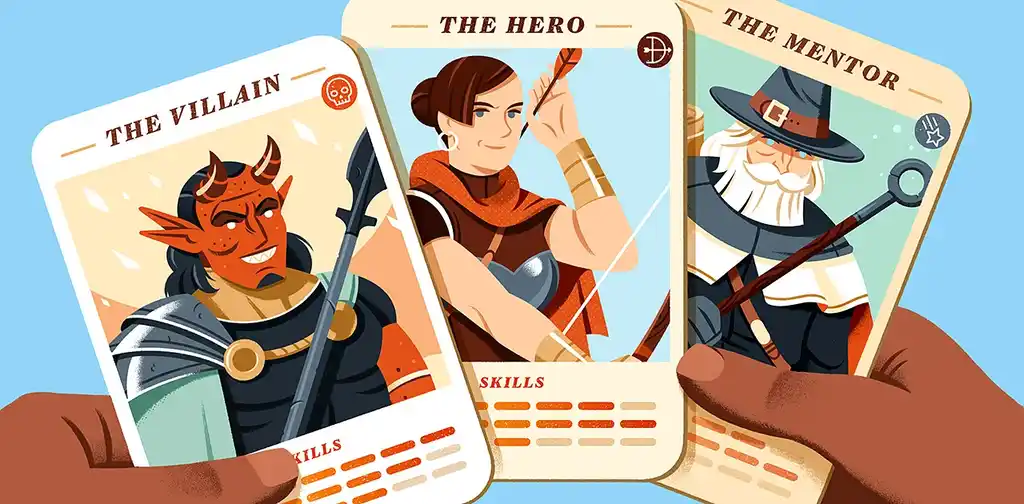
FREE RESOURCE
Reedsy’s Character Profile Template
A story is only as strong as its characters. Fill this out to develop yours.
And speaking of personality…
Personality
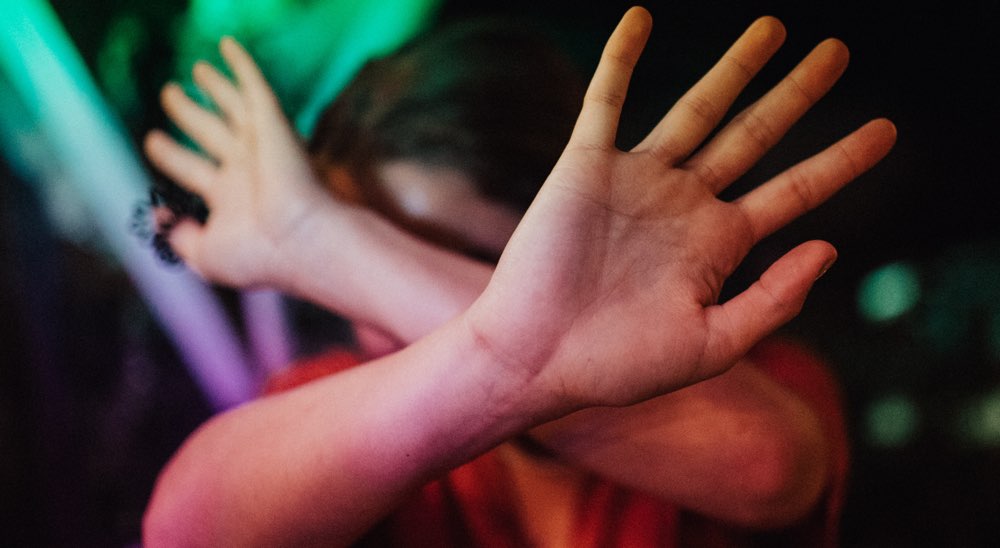
These qualities describe how someone acts and what they’re like.
- Very introverted, quiet and reserved, keeps to themselves
- Highly extroverted, loves socializing and meeting new people
- Mega control freak who has to have everything their way
- Neat freak (often coincides with control freak)
- Total slob who never knows where anything is
- Super stubborn and will never admit when they’re wrong
- Brutally honest and can’t lie to save their life
- Extremely judgmental of other people
- Short-tempered, especially when irritated
- Always patient, even when frustrated
- Hilarious or odd sense of humor
- Very hard to make them laugh
- Loves to eat and is obsessed with food
- Loves to drink and is constantly partying
- Constantly complains about everything
- Extremely loyal and will do anything for their friends/family
- Adventurous and willing to try anything
- Cautious and careful no matter what
- Energetic, hardly ever needs to rest
- Sleeps all the time and still gets tired during the day
- Horrible sense of direction and constantly gets lost
- Overachiever who loves school/structure
- Really modest and won’t ever brag about themselves
- Extremely emotional and will cry at the drop of a hat
- Stoic and detached, rarely shows emotion
- Wildcard whose behavior is unpredictable, even to their friends
- Notoriously two-faced and will betray anyone
- Charismatic and can convince anyone to do their bidding
- Very proper and always polite to others
- Dates tons of people and has a new boyfriend or girlfriend every week
- Obsessive personality — whether it’s a TV show, brand, musical artist, or even another person, they’ll get attached and think/talk about it constantly
Q: What are effective adjectives for describing characters, and when should each be used?
Suggested answer
My favourite from my writing has been "etiolated." It's a word that describes a seedling starved of sunlight - thin and pale and reaching up. It contains a lot of layers of imagery which were useful for describing a character at their lowest point.
Mairi is available to hire on Reedsy ⏺
Curious, rebellious. A character that doesn't quite "fit the mold" will usually be interesting to readers.
Melody is available to hire on Reedsy ⏺
Characters are best described through body language and dialogue. Avoid overusing adjectives and let your readers do some of the interpreting. There is no need to spell everything out for them. The best way to convey a character's personality is through action, dialogue and body language.
Eva maria is available to hire on Reedsy ⏺
Some of these clearly match up with each other (like being adventurous and energetic), while some are opposites (like being short-tempered vs. patient). However, some might overlap even if they don’t seem like they should — for example, someone with a great sense of humor might still be hard to make laugh because they’d have very high standards for what’s funny. As you’re creating characters, think carefully about these traits and how they might relate to each other.
Strengths and weaknesses
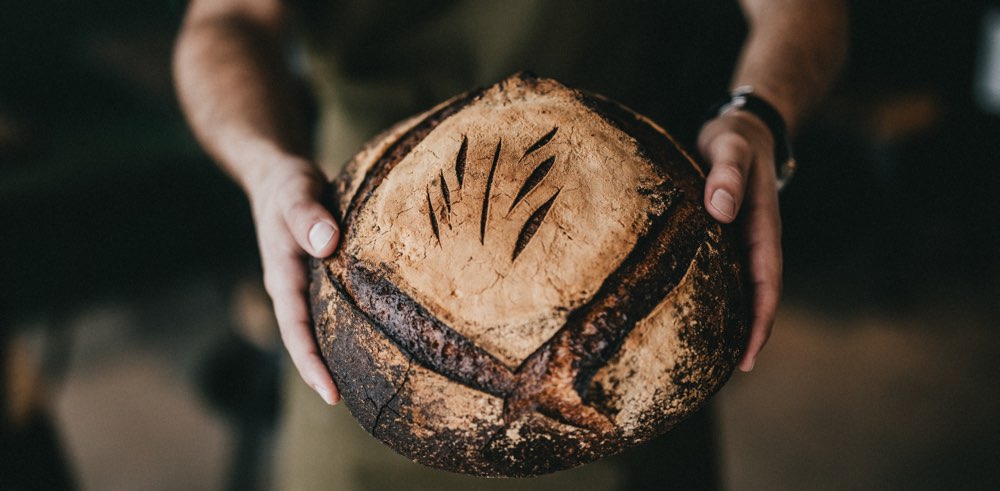
This section contains suggestions for unique strengths and talents, as well as weaknesses or negative traits one might possess.
Strengths/talents:
- Fantastic cook or baker
- Skilled musician (piano, guitar, violin, etc.)
- Artistic talent (drawing, painting, sculpting, etc.)
- Model athlete (football, hockey, swimming, etc.)
- Great at voices/ventriloquy
- Can do sleight-of-hand — may be a pickpocket
- Speaks multiple languages, even obscure ones
- Knows everything about history
- Mathematical or scientific genius
- Brilliant coder and can hack into any database
- Skilled mechanical inventor
- Can build or put together anything
- Super-quick logical reasoning
- Exceptional memory/genius IQ (several of the above might fall under this one)
- Special connection with animals
- Super empathetic and understanding of other people
- Extremely fast runner
- Contortionist (can twist their body into any shape)
- Psychic talent (can predict the future)
- Amazing mechanic
- Super strength, flying, invisibility or other superpowers
- Unusually high tolerance for pain
- Survival skills like hunting and fishing
- Quick reflexes, acts fast in a crisis
- Brave and fearless, not scared of anything
- Able to talk their way out of any trouble/invent stories on the fly
Weaknesses/negative traits:
- Awful driver
- Always running late
- Illegible handwriting
- Terrible at public speaking
- Socially awkward — hard for them to make friends
- Has tons of credit card debt from online shopping
- Self-destructive and always wants what’s worst for them
- Gets blackout drunk every time they go out
- Extremely conceited or arrogant
- Compulsive liar
- Manipulative of friends
- Gets jealous over nothing
- Often mean for no reason
- Unbelievably self-centered
- Extremely passive-aggressive
- Arachnophobia (irrational fear of spiders)
- Coulrophobia (irrational fear of clowns)
- Agoraphobia (irrational fear of leaving the house)
- Pantophobia (fear of everything)
Be careful how you incorporate these strengths and weaknesses, as you don’t want their inclusion to seem unnatural. After all, personality traits tend to reveal themselves on a daily basis, but this may not be true for their special talents and fears.
Q: What tools or techniques can authors use to develop detailed and effective character profiles?
Suggested answer
Writers can establish good character profiles by examining surface information and interior depth. Beyond physical description, notice personality, values, and contradictions—what the character wants vs. what the character fears. Techniques like freewriting as a character or writing the character's background can elicit subtleties that don't find their way into the main action but still affect behavior. Some authors use Q&A-type questions to explore motivations, habits, and relationships, and other authors create images of the character's past to observe how it affects present decisions. What is most important is consistency: when you know how your character thinks and behaves, their actions make sense, and readers feel that they are interacting with real people and not with plot devices.
John is available to hire on Reedsy ⏺
This is so important because the character will drive your story.. You reader has to be fascinated by your protagonist and be routing for him or her. I always interview my characters in depth. I don't just ask them about the basics of their lives and history. I ask them what they fear most in life, what makes them get up in the morning.
Joie is available to hire on Reedsy ⏺
I provide all my clients with a template that I devised myself for ensuring that every single character in a novel is fully fleshed-out, colourful and contrasting, both within themselves and to other characters.
Vanessa is available to hire on Reedsy ⏺
I've had success doing Enneagram quizzes in each character's persona. Even if you don't believe in personality profiles, it's a good way to check whether a character's goals, motivations, and considerations are consistent. They can reveal gaps where you still have a question to answer about a character's background and, best of all, it reassures you that you're writing characters who contrast with one another, rather than representing different aspects of your temperament as the writer.
Mairi is available to hire on Reedsy ⏺
The most important issue for each character is what they want. Desire and wants fuel the story, especially regarding what the main character wants. When two characters want the same thing, this is when tension can arise organically.
Melody is available to hire on Reedsy ⏺
Indeed, sometimes the best way to use quirks like these is to surprise your reader with it at the right moment. Maybe it’s the eleventh hour, and your MC has nowhere else to turn, only for their friend’s special skill to save the day!
Also, as you can tell from both lists, there’s quite a range of strengths and weaknesses you can give your characters. Some of those talents require more practice than others, and some of the weaknesses are greater flaws than others — for instance, being a mean or manipulative person is obviously much worse than having bad handwriting. However, it’s good to be familiar with a wide range of both major and minor quirks so you can create more fleshed out characters.

FREE COURSE
How to Develop Characters
In 10 days, learn to develop complex characters readers will love.
Miscellaneous
These are idiosyncrasies that don’t really fit into any of the above categories, but could still be of good use in your story.
- Dresses all in one color
- Bedroom is decorated exactly like a Pinterest picture
- Won’t drink still water, only sparkling
- Refuses to use headphones and blasts their music in public
- Always dresses too nicely for the occasion
- Walks around barefoot, even in stores and other public places
- Hates being inside, sleeps and goes to the bathroom outdoors
- Can’t help but look in every mirror they pass
- Wears a small plastic backpack everywhere
- Preps their meals three weeks in advance
- Drinks shots of espresso all day long
- Sings opera in the shower
- Makes their own (terrible) abstract art and hangs it on their walls
- Gets super excited about Christmas and then really depressed in January
- Refuses to wear glasses even though they need them
- Carries around a secret teddy bear
- Has been wearing the same friendship bracelet for three years
- Fastidiously lint-rolls all their clothing
- Will leave a shop or restaurant if someone walks in with a baby
- Extremely superstitious (knocks on wood, avoids the number 13, etc.)
- Drops everything other people ask them to hold
- Likes to go out dancing by themselves
- Prefers to have the lights off or dimmed at all times
- Only reads books written before 1900
- Only watches movies that get really bad reviews
- Always wears multiple sweaters on top of each other
- Won’t eat anything that doesn’t have bread (at least on the side)
- Thinks they’re a time-traveler from the medieval era
- Gives friends and family excellent homemade presents
- Leaves the office last every day so they can push all the chairs in
- Hates jagged numbers (always fills their gas tank to the dollar, sends emails on the hour, etc.)
- Has an imaginary friend they still talk to, even in adulthood
- Owns a lizard that they try and use as a guard dog
- Listens exclusively to Britney Spears
- Leaves little notes in library books for future readers
- Uses tissues to hold onto poles on public transportation
- Wears their hair in Princess Leia buns
- Never goes a day without talking to their mom
- Hums “In the Hall of the Mountain King” when they get stressed
- Clucks their tongue while walking, so they sound like a horse
- Quotes Pulp Fiction all the time
- Loves hanging out in completely empty places
- Convinced they’re going to die in a freak accident
- Grows all their own food in their vegetable garden
- Never pays for train or bus tickets
- Can recite Shakespearean sonnets
- Recycles and eats vegetarian, but only out of guilt
- Has a “vision board” posted on their ceiling
- Loves the beach but hates swimming
- Flicks people in the forehead when they get annoyed
- Laughs at everything, even bad jokes
- Curates a great Instagram feed of street art
Clichéd “quirks” to avoid
Giving your characters interesting tics can cross-over into ham-fisted writing if your quirks are used way too much, like the following:
- Pale skin
- Crooked smile
- “Intense” stare
- Relentless clumsiness
- Artificial hair colors that are supposedly natural
- Characters thinking they’re unattractive when everyone else thinks they’re beautiful
- Basically, any stereotype that hasn’t been developed enough
When readers see these traits on the page, they roll their eyes and think, “Ugh, not again.” Many of these aren’t even quirks, but fairly common traits that the writer attempts to romanticize. Traits like these signify to the reader that the author has barely put any thought into creating their protagonists and antagonists — they’ve just chosen ostensibly quirky features that are actually overused and ineffective. So stay away from them at all costs!
As we said, the business of selecting and integrating quirks is more complicated than it seems. But after reading through this guide, you should have a much better understanding of what they are and how to use them… not to mention a tremendous variety of quirks from which to choose! So will your character be a gum-chewing code genius or a short-tempered contortionist? From here on out, it’s all up to you.
What are some of your characters' quirks? Tell us in the comments below!
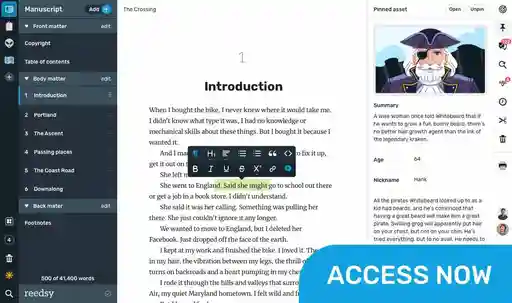
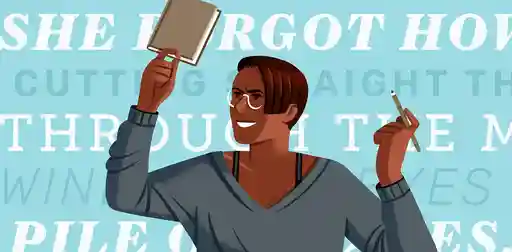
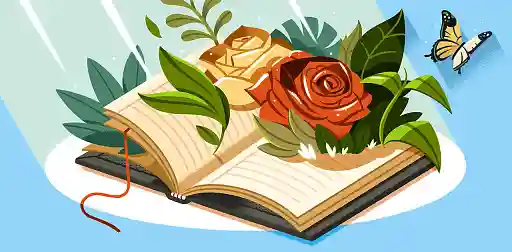
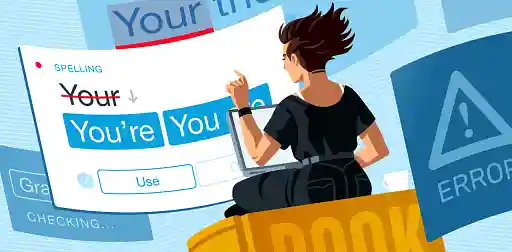

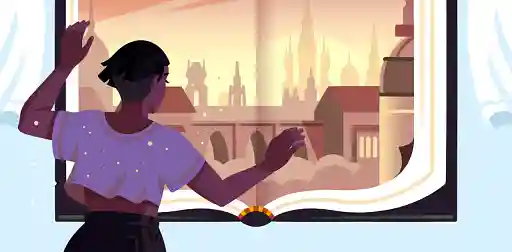



5 responses
Ruth Olatunde says:
17/06/2019 – 17:24
I have a character in my story who is extremely good at tolerating pain and will keep obeying rules even if it's eating her up. She hates animals because she can't bare to think that animals have a brain of their own and can decide to do whatever at any point-- like jump on her face #grins. She is touched by victims no matter the situation and mostly watches movies that are under rated. She feels fulfilled paying attention to the unpopular.
serah says:
11/07/2019 – 02:01
"Avoid making any of your characters too quirky. You don’t want any of them, especially female characters, to cross the line from unique to unbelievably idiosyncratic." Sure, let's make all our females cookie cutter plastic barbie dolls. Oh wait, this post praises Katniss, the epitome of that. I forgot that SJWs want us to never give females flaws or make them weird. The person that wrote this article should really talk to a real women, as they aren't all super perfect and talented.
↪️ Martin Cavannagh replied:
11/07/2019 – 09:00
I think that the author intended quite the opposite. What she was getting at was the idea that a lot of (commonly male) writers will give their (commonly secondary) females characters a series of quirks instead of a rounded personality. The result often ends up being a two-dimensional manic pixie dream girl-type who can be as unreal as a Barbie doll.
↪️ Elizabeth replied:
29/09/2019 – 17:13
I don’t think that’s what they were meaning. It was more don’t make them absolutely insane and eccentric, but you should give them quirks.
JJ T says:
12/10/2019 – 17:15
Why does everyone hate on this article I thought it was great!